Reclaim your pre-pandemic function
You may have lost endurance or strength without realizing it. Here's how to get it back.
- Reviewed by Anthony L. Komaroff, MD, Editor in Chief, Harvard Health Letter; Editorial Advisory Board Member, Harvard Health Publishing
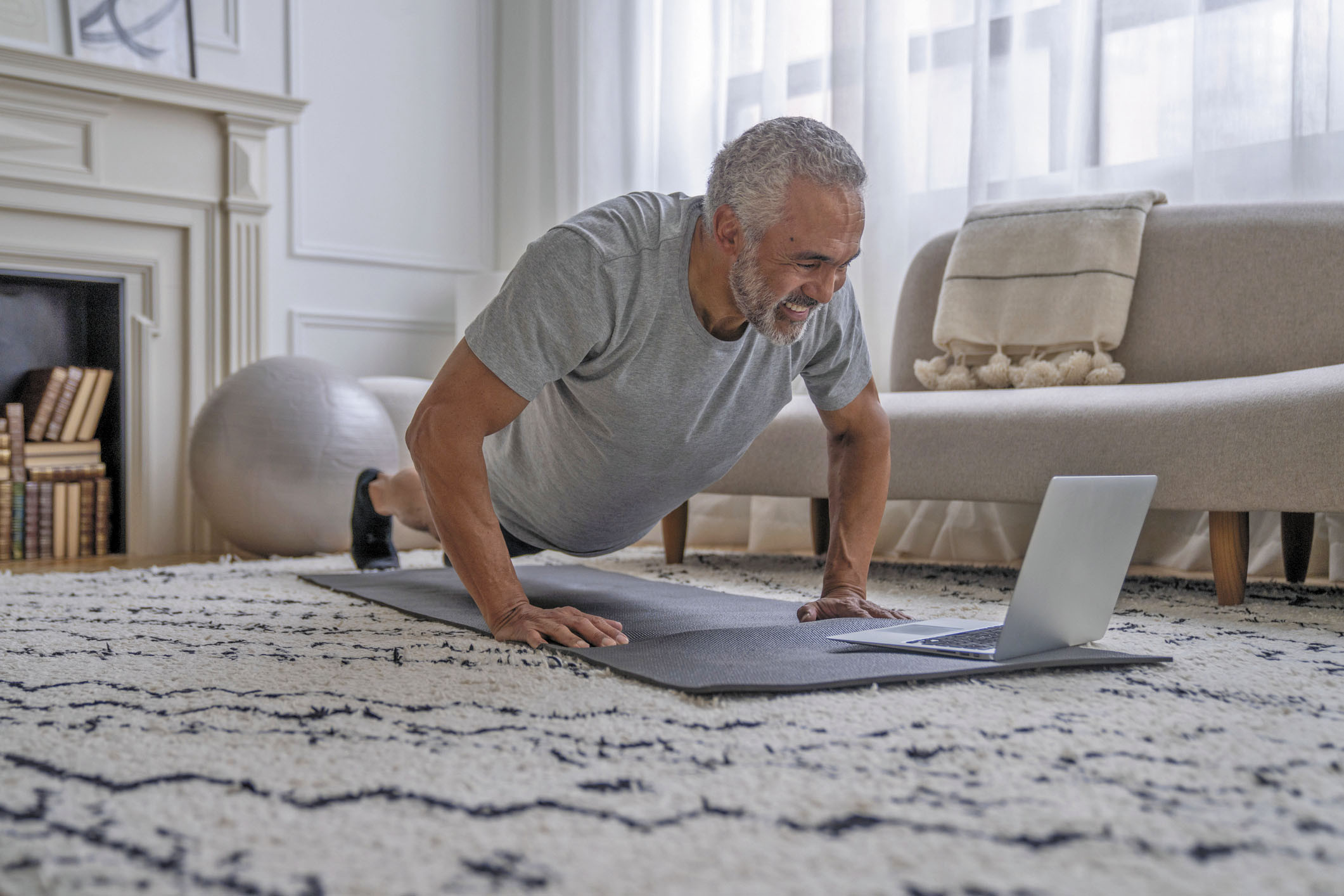
We've moved past some of the immediate effects of the pandemic, with many people returning to their previous physical activities. But some people are finding they're a bit worse off functionally than they were before COVID-19 changed the world. "Some people say they can't walk as far as they used to, or they're now afraid to step on uneven surfaces. They feel they've suddenly aged," says Janice McGrail, a physical therapist at Harvard-affiliated Spaulding Rehabilitation Hospital.
Are these changes just a consequence of getting older, or did something happen during the pandemic to reduce our physical capabilities?
Use it or lose it
COVID surges have caused many people to take breaks from exercising regularly over the past few years. Perhaps they got sick. Or they couldn't work out in a gym and didn't know how to work out at home. Or they felt sad or unmotivated.
Unfortunately, once we stop being active, our physical function and energy levels go downhill rapidly. Muscles get weaker and use more energy to do their jobs, the body's balance system (which involves coordinated actions among our nerves, joints, senses, and brain) gets rusty, and the cardiovascular system (the heart, lungs, and blood vessels) gets out of practice at providing enough blood and oxygen when the body demands it during activity.
"You might not even notice that you're becoming deconditioned," McGrail says. "And if you don't do anything right away to regain the strength or function you've lost, you'll lose even more. It becomes a downward spiral."
Telltale signs
How can you recognize symptoms of deconditioning if you haven't noticed any so far? McGrail suggests looking at some of your habits. It could be that
- your former 30-minute walk is now just a 15-minute walk
- you don't have the energy to shop, so you order groceries online for pickup, or you have them delivered to your door
- you don't meet a friend for a walk anymore; you just meet for coffee
- you worry about falling, and you're more cautious about where you step.
"You start to change your habits, patterns, and activities because you don't think you can do it or you don't feel like doing it," McGrail says.
Reclaiming function
If you recognize that you're not where you were physically a few months or a year ago, you're not alone: many people have experienced similar changes. But accept that it's time to turn things around. Consider the following steps.
Set a big goal. "Ask yourself what you've lost because of decreased function and what you want to regain. Is it the ability to remain independent, go to the grocery store, play with your grandkids, or go on a hike to see a beautiful view? Get an image of what you want," McGrail suggests.
Track your activity. If you have a smartphone, it might be able to track your steps each day. If not, clip a pedometer ($10) onto your waistband or wear a fitness tracker ($20 and up). The devices can record the number of steps you take each day and (if you wear a fitness tracker) minutes that you're active.
Take action. "Push yourself out of your comfort zone, even if it's just off the couch," McGrail says. "Sign up for an online or in-person exercise class. Start walking each day, or go for a longer walk if you're already active. Make your activity something that you like and something that fits into your life, so you'll be more likely to stick with it."
Get help from the pros. If you have an underlying condition such as heart disease or knee pain, talk to your doctor before you start to exercise. Then, see a physical therapist, who can assess your physical strengths and weaknesses and tailor an exercise program to your specific health condition.
Set small goals. "Just like an athlete during preseason, you'll need to build your activity level gradually, so you don't get injured," McGrail says. "If you take just a thousand steps per day, increase it by another 500 or 1,000. If you're active for 10 minutes per day, increase it to 15 minutes. Keep making small increases each week." Your eventual step goal should be 7,500 steps per day, and at least 22 minutes of moderate-intensity activity (such as brisk walking) per day.
Add strength training. It takes strong muscles to be able to do even basic activities each day, such as getting up and down from a chair, climbing stairs, carrying groceries, standing at a stove to make dinner, or getting in and out of a car. And it takes even stronger muscles to live an active lifestyle. "A week or so after you increase your activity levels, start improving your muscle strength," McGrail says. "Do a five- or 10-minute session every day, or a 20-minute session two or three days per week. You can use dumbbells, resistance bands, or weight machines. Or do body-weight exercises such as squats, biceps curls, or planks."
Enlist a friend. Exercising with a friend can help motivate you and keep you on track. Plus, it's fun.
Don't give up. "Once you increase your activity, you'll notice a difference in your energy levels right away. But it could take four to six weeks before you see real gains in your muscle strength," McGrail says. "Just remind yourself why you're working so hard. What was that big goal you set? Keep it in mind every day."
For more information, check out the Harvard Special Health Report Starting to Exercise (/ste).
Moves of the month: Two resistance band exercises
Chest punches
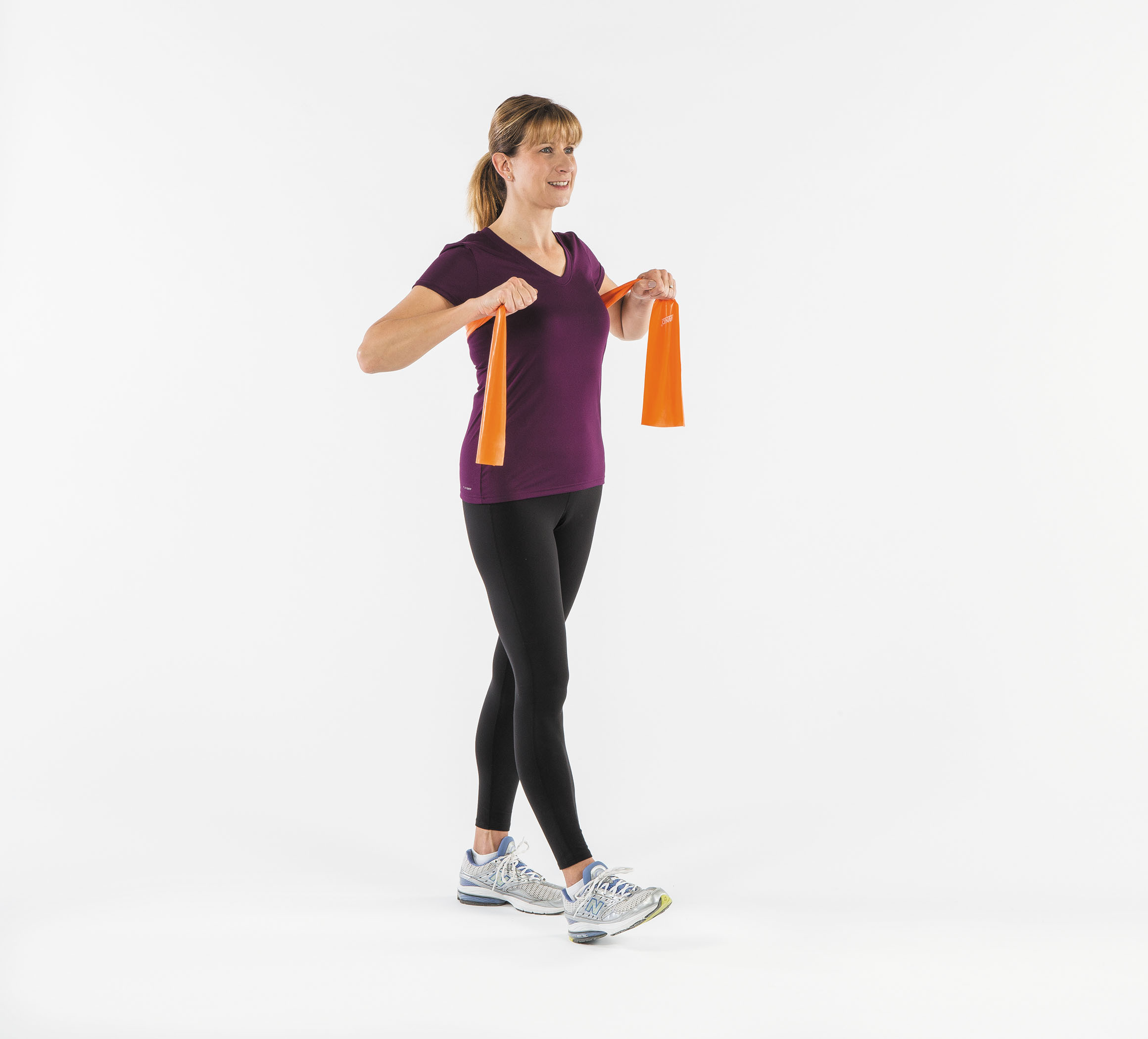
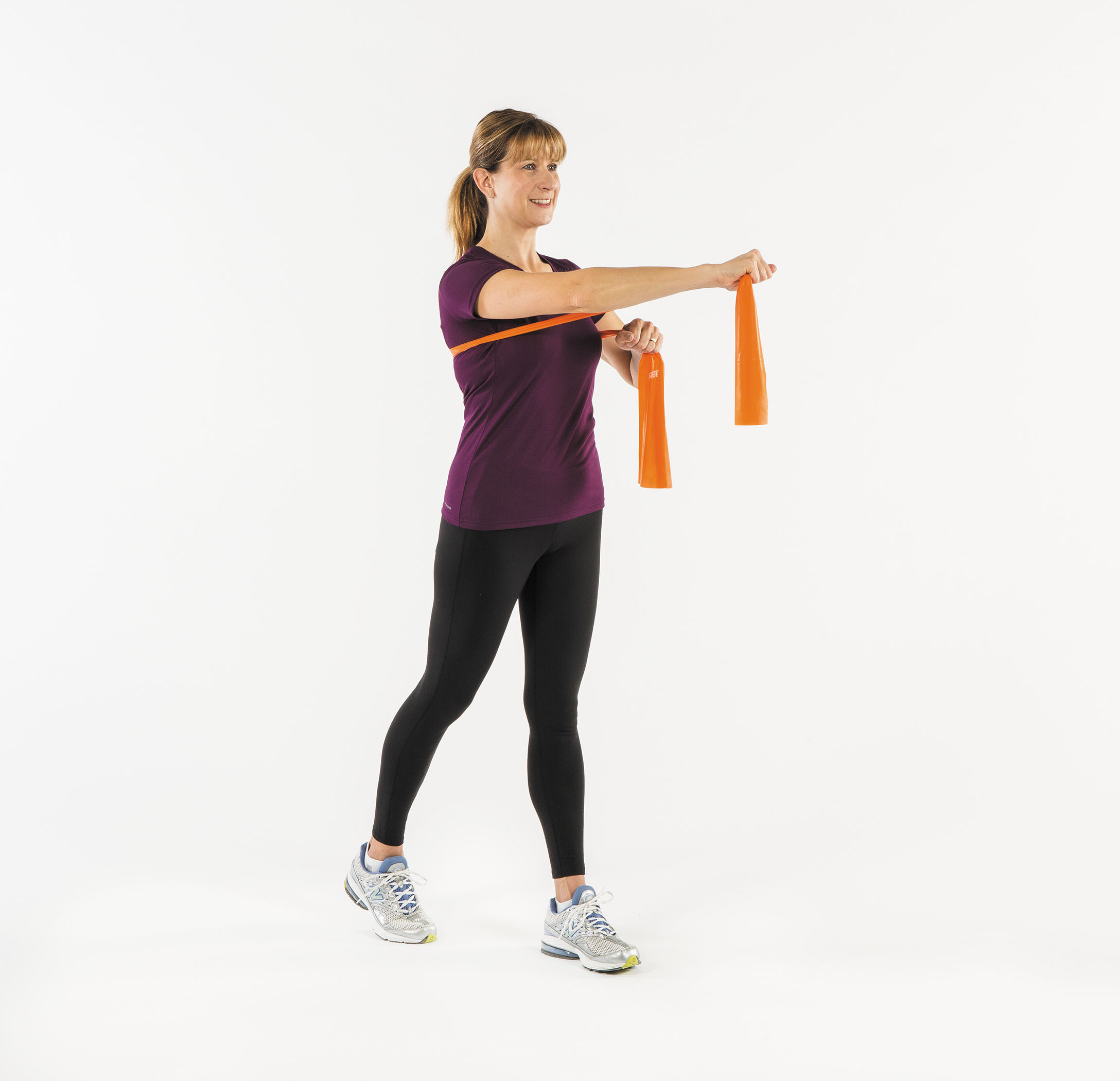
Place a resistance band around your back and under your armpits. Hold one end in each hand by your shoulders. Punch your right arm out in front of you on a slight diagonal across your body, then punch with your left arm out in front of you on a slight diagonal. Repeat 10 times.
Sword pull
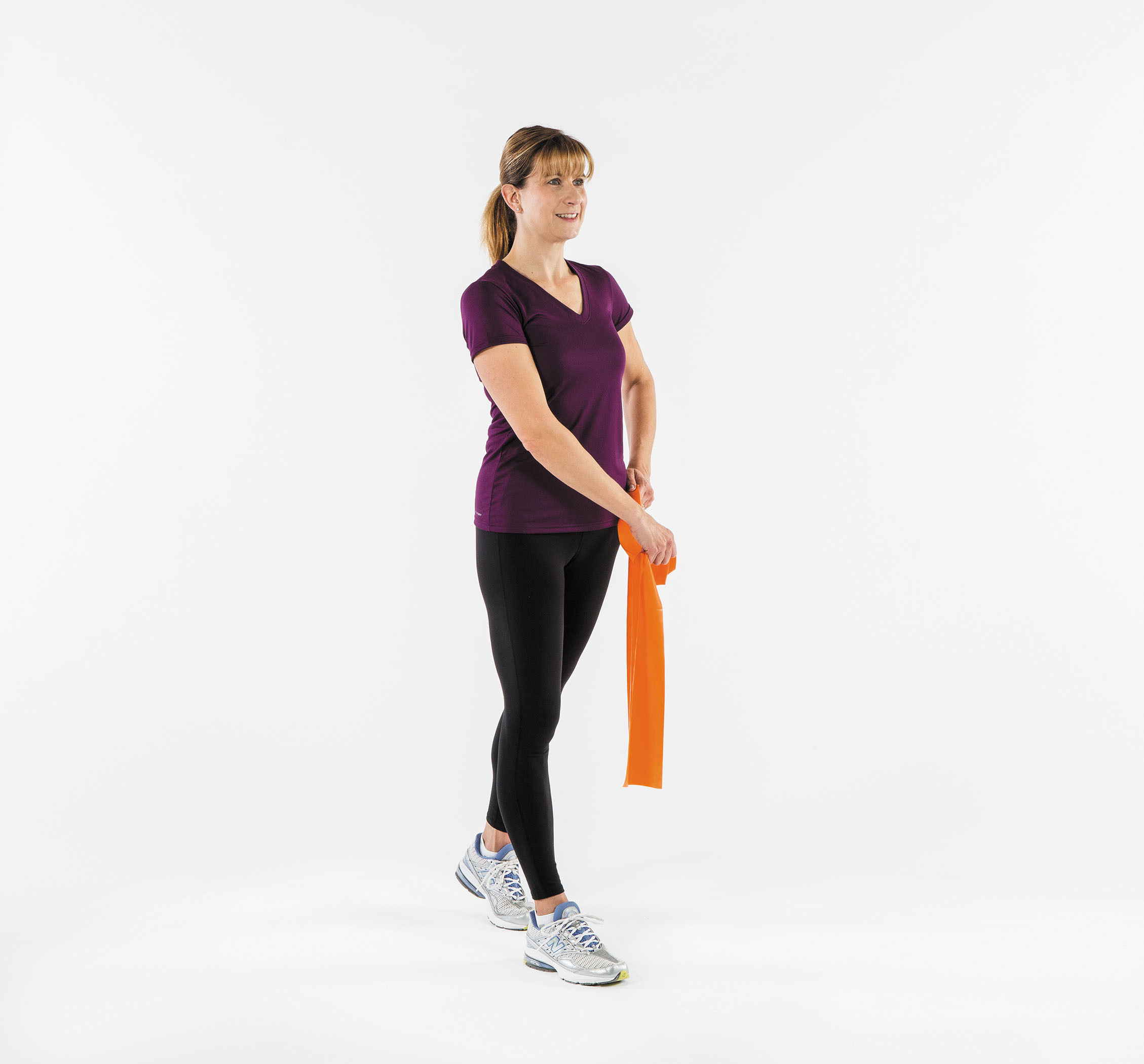
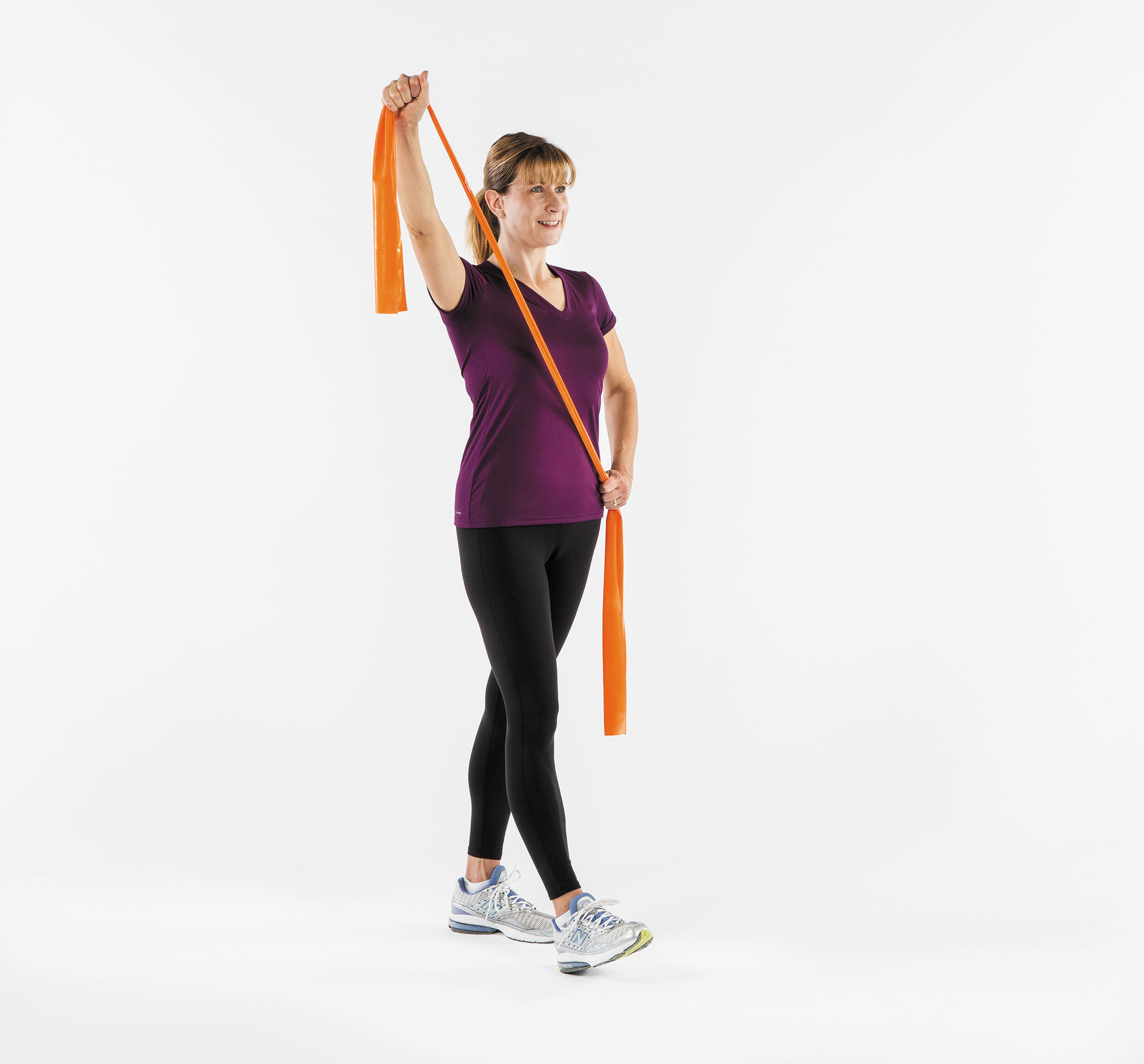
While holding the ends of a resistance band, anchor your left hand on your left hip, and bring your right hand close to it. Raise your right arm up and out, then lower to the starting position. Repeat 10 times, then switch arms and do the exercise another 10 times.
Image: © FatCamera/Getty Images; exercise photos by Michael Carroll
About the Author

Heidi Godman, Executive Editor, Harvard Health Letter
About the Reviewer

Anthony L. Komaroff, MD, Editor in Chief, Harvard Health Letter; Editorial Advisory Board Member, Harvard Health Publishing
Disclaimer:
As a service to our readers, Harvard Health Publishing provides access to our library of archived content. Please note the date of last review or update on all articles.
No content on this site, regardless of date, should ever be used as a substitute for direct medical advice from your doctor or other qualified clinician.
















